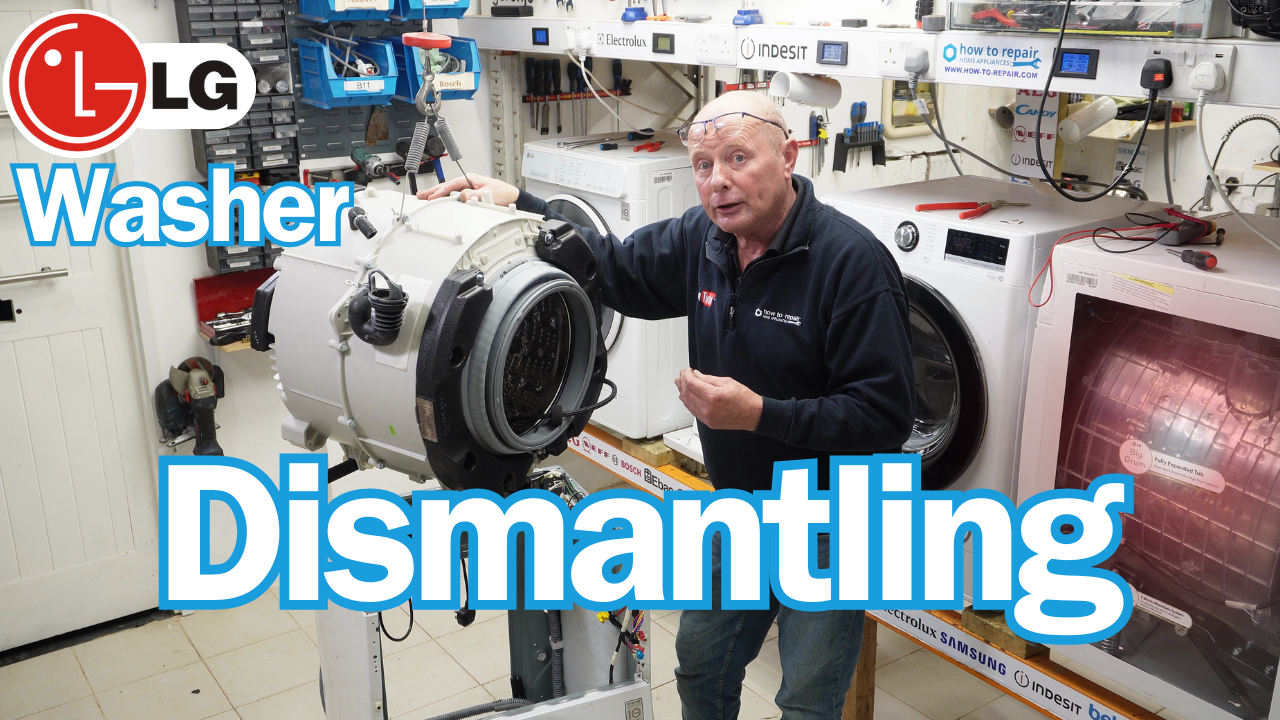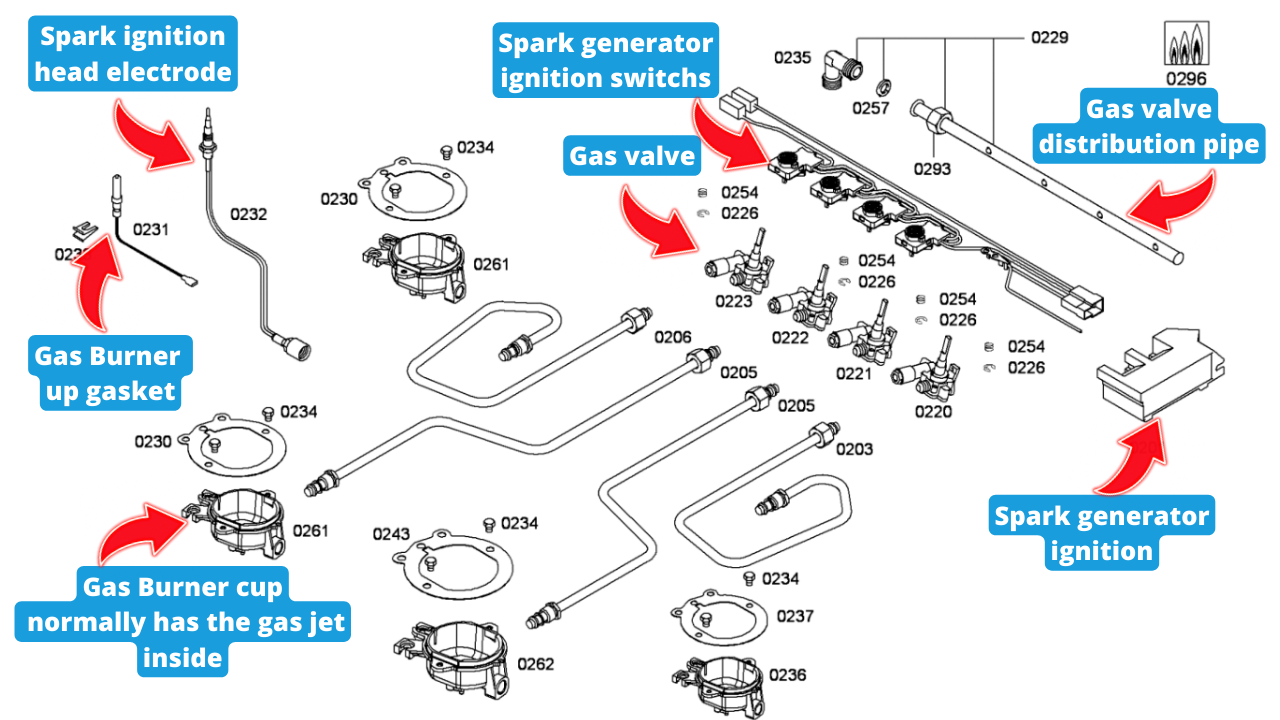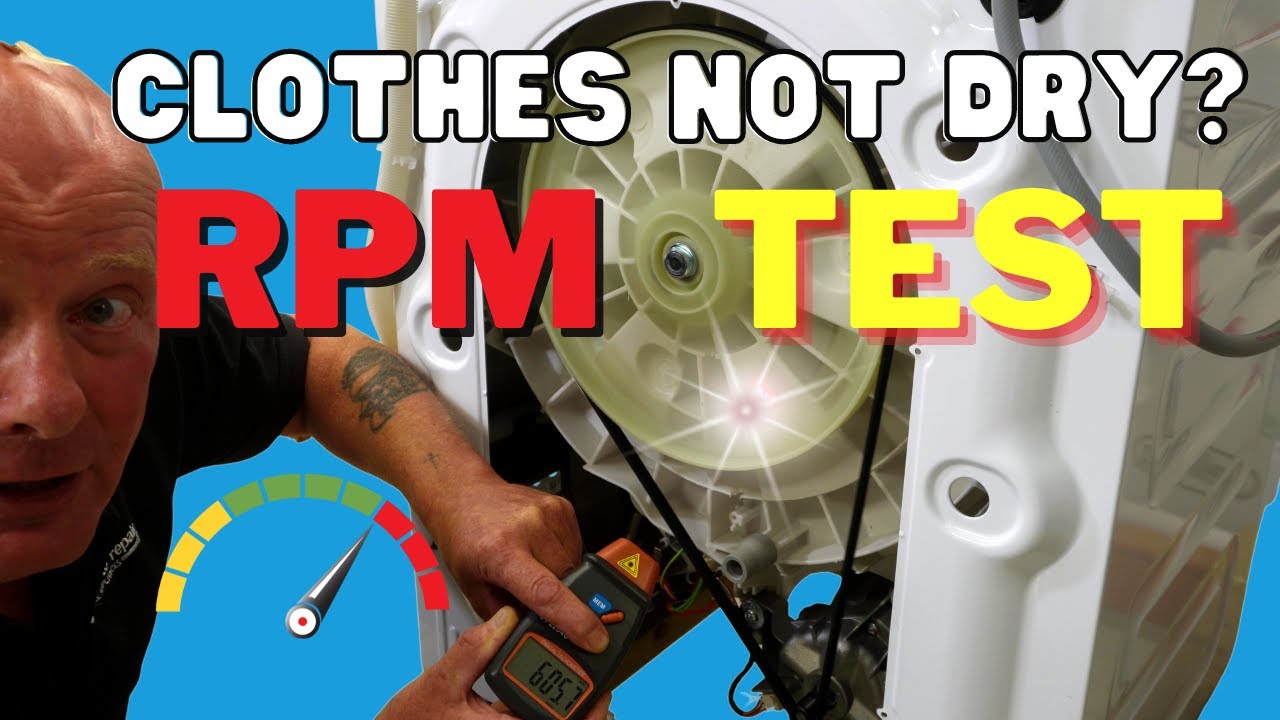Miele Washing Machine Disassembly: A Step-by-Step Guide to Common Faults and Repairs
In this video, you can quickly navigate to specific sections by clicking on the relevant timestamps provided below. Each section focuses on a different part of the Miele washing machine w5740. Follow along as we dismantle and discuss each component.
00:00 - Introduction to Stripping Down a Miele Washing Machine w5740: Begin your journey with an introduction to the disassembly process of a Miele w5740 washing machine.
02:54 - Emergency Door and Pull Cord Pump Filter: Explore the emergency door mechanism and understand why the pull cord pump filter might not be emptying.
04:46 - Error Codes and Removing the Miele Front Panel & Lid: Learn about the various error codes and get step-by-step guidance on how to safely remove the front panel and lid.
08:09 - Removing the Miele Side Panels: Witness the process of detaching the side panels to gain access to the inner components of the machine.
08:50 - Removing the Miele Door Interlock (Part numbers: 3527670, 04842085): Delve into the intricacies of the door interlock mechanism and how to safely remove it.
09:24 - Removing the Miele Heating Element & NTC Sensor (Part numbers: 6260482, 6133511): Understand the significance of the heating element and the NTC sensor, and how to extract them from the machine.
12:57 - Removing the Miele Door Seal Gasket (Part numbers: 06579421, 06461682, 5710954): Get insights into the door seal gasket's role and the process of its removal.
14:55 - Removing the Miele Pump (Part number: 6239562): Discover the function of the pump in the washing machine and the method to take it out.
17:01 - Removing the Miele Sump Hose (Part numbers: 05913421, 5632920): Learn about the sump hose's importance and the steps to remove it.
19:06 - Antiflood Device (Part numbers: F138 7260201, 241920): Explore the antiflood device, its significance, and how to detach it from the system.
20:12 - Miele Motor Removal (Part number: 6947043): Understand the central role of the motor in the washing machine and the procedure to extract it.
23:36 - Miele Belt (Part numbers: 5pj1321 5033550, 05749920): Discover the importance of the belt in the system and the method for its removal.
24:31 - Miele Control Display Board and Soap Draw Removal (Part number: 07256628): Delve into the core of the machine's operations with the control display board and learn about the soap draw's removal.
28:17 - Miele Soap Box and Water Valve Top Hose (Part numbers: 5835525, 316900009 20, 5939800): Get acquainted with the soap box and the water valve top hose, and the process to remove them.
30:38 - Non-Return Brake Valve (Part numbers: Miele 7076032, 09095580): Discover the significance of the non-return brake valve and how to dismantle it.
32:06 - PCB (Part numbers: 07851882, 09172854): Get insights into the printed circuit board (PCB) and its role in the machine's operations.
34:24 - Electrical Filter Suppressor (Part number: 5649600): Learn about the importance of the electrical filter suppressor in ensuring smooth operation.
35:15 - Removing the Drum Suspension Legs (Part numbers: 07381924, 07381922): Conclude by understanding the drum suspension legs' role and the steps to remove them from the system.
How a Miele washing machine works. fault code or error code diagnostic
In the video below, discover how to dismantle a Miele washing machine for access to its components and an explanation of their functions. I'll guide you through removing each part while demonstrating the machine's construction.
The video provides valuable insights into safety procedures, tools used, and how these components contribute significantly to the operation of the appliance. Refer to the part numbers listed below corresponding with those removed from this specific Miele W5740 washing machine.
For assistance with other Miele models, explore our website's extensive collection of instructional videos on various repairs.
Miele Washing Machine displaying Error Codes
| Error Code | Issue | Advice |
|---|---|---|
| F0 | No fault registered | No fault registered |
| F1 | NTC sensor short-circuited water / heating |
Check the NTC sensor, replace if necessary. We have a video to assist you with understanding how NTC sensor is work |
| F2 | NTC sensor open-circuited water / heating |
Check the NTC sensor, replace if necessary. We have a video to assist you with understanding how NTC sensor is work |
| F10 | Water intake |
Please perform the following steps to ensure proper water supply for the machine:
|
| F11 | Water drainage | Check the pump for blockages when looking for drainage problems. Ensure it's working right. Inspect the sump hose and all pipes from the pump to the drain system. Also, look at where it connects to make sure there's no blockage there too. |
| F15 | Water intake fault - Hot water | Check hot water supply, ensure stopcock is open. |
| F16 | Foam / Excess detergent | Reduce detergent usage, run extra rinse cycle. |
| F19 | Flow meter slow / difficult to rotate | Check the flow meter, replace if necessary. |
| F20 | Heating | Test heating element and NTC sensor using a meter. Check element wires and relay on circuit board. Videos to help with this |
| F29 | Heater steam inactive | Check heater steam system. |
| F39 | Electronic unit fault BAE (Control and Display electronic) | Check electronic unit, replace if necessary. |
| F41 | Faulty EEPROM / incorrect data | Check electronic components, replace if necessary. |
| F43 | Model type not programmed | Program model type properly. |
| F45 | Flash RAM defective / Incorrect data | Check electronic components, replace if necessary. |
| F46 | LCD connection defective | Check LCD connections. |
| F47 | BAE/ SLT interface defective | Check interface connections. |
| F50 | Drive | Check drive components. |
| F51 | Level switch, pressure sensor | Check level switch and pressure sensor. |
| F53 | Speed sensor fault | Check speed sensor. |
| F56 | Final spin speed < 400 rpm | Check for unbalanced load or drive issues. Check the wiring going to the motor and also inspect the carbon brushes if fitted |
| F62 | Programmee selector defective (DWS)+B97 | Check program selector and control electronic. |
| F63 | Water path control unit fault | Check water path control unit. |
| F64 | Path sensor defective | Check path sensor. |
| F65 | Drum lighting cap missing | Replace drum lighting cap. |
| F81 | Heater unit - Steam inactive | Check heater unit and steam system. |
| F83 | Heater unit - Steam - Excessive temperature | Check heater unit and steam system. |
| F92 | Bacterial contamination risk | Check for bacterial contamination risk. |
| F96 | Water intake fault alternative water supply (grey water) | Check alternative water supply. |
| F100 | Communication link failure to IK6 | Check communication link to IK6, replace if necessary. |
| F101 | IK6 faulty / incompatibility | Check IK6 component, replace if necessary. |
| F102 | Communication to smart house bus failure | Check communication link to smart house bus. |
| F103 | Smart house bus link incompatibility | Check smart house bus link. |
| F104 | Drive / low voltage | Check drive components and voltage. |
| F105 | NTC Thermoblock steam short circuit | Check NTC Thermoblock, replace if necessary. |
| F106 | NTC Thermoblock steam interruption | Check NTC Thermoblock, replace if necessary. |
| F131 | EZL256 faulty / incompatible | Check EZL256 component, replace if necessary. |
| F138 | Water in drip tray | Check for water in drip tray. |
| F139 | WPS dispenser unit | Check WPS dispenser unit. |
| F140 | Drainage dispenser unit | Check drainage dispenser unit. |
Miele washing machine error code faults, that only display LEDs
| Error Code | Issue | Advice |
|---|---|---|
| Start/Stop | No power or closed door | Check power supply and door status. |
| Excess detergent | Incorrect dosage | Follow dosage instructions. |
| Drain | Drain hose issues | Check drain hose and filter. |
| Inlet | Water supply issues | Check stopcock, inlet hose, and filter. |
| WaterProof fault | Water protection system activated | Follow instructions to resolve. |
| Stripes in display | Display contrast | Adjust contrast settings. |
| Display is blank | No power or stand-by mode | Check power supply and exit stand-by mode. |
| Display in foreign language | Incorrect language setting | Change language settings. |
| Display requests PIN code | PIN function activated | Enter PIN code or deactivate PIN function. |
| Washing machine sounds an audible signal and 'Call Service' | Drum lamp not properly fitted | Check and fix drum lamp position. |
| Water inlet fault appears in display when machine is first used and machine does not spin | Initial water intake needed | Run empty wash program to activate spin function. |
| Washing machine does not work and no indicators operative | Power or door issues | Check power supply, socket, and door status. |
| The pump makes strange noises | Normal drainage cycle noises | Normal behavior. |
| The washing machine rattles while spinning | Uneven level or unstable floor | Adjust washing machine level or install on a stable surface. |
| The washing machine leaks around the door | Door glass not sealing or damaged seal | Clean and secure door glass and seal, replace seal if necessary. |
| Water leaks from the end of the drain hose or from underneath the appliance | Drain hose issues or blockage | Secure drain hose and remove blockages. |
Understanding Miele, washing machines components and functionality
The Miele washing machine's door lock
This needs to be locked to start its cycle and keeps kids from opening it during use. If you can choose a program but nothing happens when pressing start, your door lock might be broken. You may even hear the faulty lock clicking.
Washing Machine Fill System Explained
The washing machine's fill system starts with a water inlet valve that leads to the soap drawer. Some machines have a water divert valve, routing water to different parts. The water then flows through the fill-to-drum hose into the machine. A pressure switch at the front measures the amount of water. This switch connects to a large bowl and small pipe. As it fills, air is pressurized and sent up to the pressure switch or one on a circuit board telling the machine its current water level.
Miele Washing machine, heating system
The heating system usually includes one or two temperature sensors, which can be mechanical thermostats or modern NTC sensors. These NTC sensors send resistance readings to the circuit board and this changes with temperature. A relay on the board activates the heater until it hits the desired temperature.
If there's a faulty heater, sensor, relay on the board, or wiring issue, then your heating won't work. Also, if the element in your heater is damaged - either being open-circuit or having too high resistance - it could trip your house's electricity supply.
Miele Washing Machine Drainage Process
The Miele washing machine's drain system works during the rinse cycle or final spin. The drum spins, flinging water out of the clothes and down to the bottom of the machine. This water goes through a sump hose that may contain a ball, which prevents your soap powder going into the pump system when filling. It then moves to the pump where it gets pressurized for removal from the machine.
On some models, this water passes through a plastic device at the back with another anti-siphon ball to prevent unwanted draining after emptying is complete. If it doesn't empty within a set time frame, an error might appear on display.
Understanding Miele Washing Machine Motor action
The Miele washing machine motor, usually located at the bottom, A tachometer attached to the motor's back informs the circuit board about its speed. During wash cycles, it rotates in either direction as directed by a relay or triac.
As the washer continues running, it enters a rinse cycle where spin speeds change based on its stage in the cycle. The speed then boosts to match what's set on the program for that portion of cleaning.
During final spin, water gets drained from high-speed rotations. As clothes dry out more, this rotation speed maxes out according to program settings - typically ranging between 800 and 1600 rpm.
Miele, washing machine suspension system
Miele washing machines have a suspension system, much like cars, with two or three legs to stabilize the drum during wash cycles. If these legs wear out or get damaged, the machine may shake and make loud noises as the drum hits the cabinet during washing, rinsing or spinning. It's important to replace worn-out legs to prevent this issue. Overloading the machine or not balancing clothes in the drum can also cause it to vibrate and produce unpleasant sounds. It also has springs at the top of the drum supporting the weight to the chassis.
Miele washing machine drums
The drum of a Miele washing machine is usually made from stainless or coated steel to prevent rust. It's attached to a three-legged spider at the back, which connects to the drum shaft and runs through seals and bearings. the drum shaft Connect to the back pulley wheel (which is connected via belt to the motor allowing rotation)
The outer part is watertight with hose access for filling or emptying.
To avoid shaking, concrete blocks or plastic-encased weights are bolted onto the sides as counterweights.
On washer-dryers, a condensing unit at the rear lets water trickle down while in dry mode, converting water vapor into liquid.
Every few years, it’s wise to check if these parts are still in good shape: bearings should be inspected for wear and tear; seals checked for leaks that could seep from. This ensures your washing machine performs optimally without any hitches.
Understanding Miele Washing Machine Electronics
The Miele washing machine's electrical system connects to the power source through a plug. A suppressor or filter regulates the electricity flow and prevents interference with other household items. The washing machine uses two circuit boards: one for programming specific to that model, and another for its display.
These circuit boards contain elements like relays, triax, resistors, diodes, capacitors etc., enabling them to control electricity supply to different parts of the machine at various times. They receive input from components such as motors tachometers and sensors like NTC, or mechanical thermostats when the program understands the information, it will increase spin, speeds, change, water levels and water temperatures according to the sensor information.
A water pressure switch measures the amount of water in the machine at any given time. The programs are typically embedded into an EPROM system unique to each model. This board can be programmed only by engineers although pre-programmed ones may sometimes be available depending on the manufacturer.
Bad wiring or faulty devices can cause a short circuit damaging these boards beyond repair.
3 Responses to “Miele Washing Machine Disassembly: A Step-by-Step Guide to Common Faults and Repairs”





















HI I have found your YouTube very usfull repairing my Miele W 1714.
Putting the seal back on the front panel is a nightmare for me.
Do you have any tips or tools or grease to assist with this task?
Very best regards Bernard Start
I only use a little bit of dishwasher detergent on the inner lip. They are quite tough to get on, especially the strain it puts on your fingers. I always recommend a second set of hands.
Thanks Paul, persistence worked in the end. Was not in my bag till I had a drink.